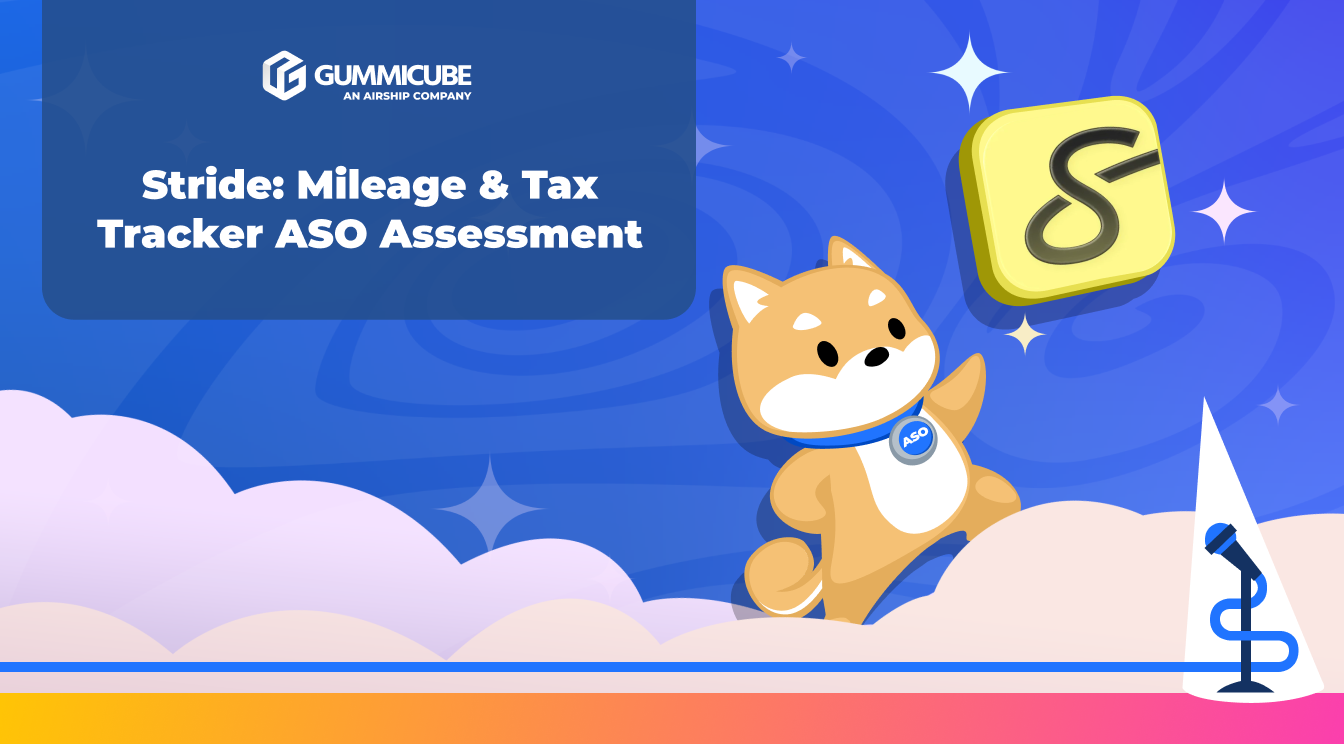
Stride: Mileage & Task Tracker ASO Assessment
Posted on January 16th, 2026
With thoughtful data-driven optimization, Stride has the potential to improve both visibility and maintain a clear value proposition for its target audience.
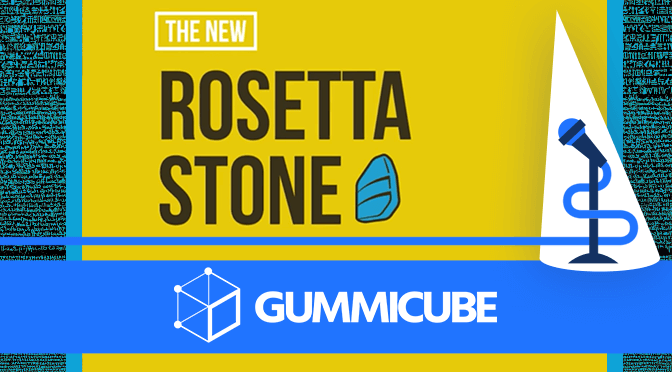
Rosetta Stone is an app designed to help teach people new languages. Users around the world have taught themselves to speak Spanish, Japanese, French and more, earning the app many awards and acclaim. While it teaches users new languages, it should follow the teachings of App Store Optimization best practices to maximize its discoverability. So, is Rosetta Stone fluent in ASO? For this week’s App Store Spotlight, we take a look and see.
iOS
On the Apple App Store, Rosetta Stone is ranked #13 in the Education category. In addition to ranking in the top of the search results for its name and related keywords (such as “Rosetta Course” and misspellings like “rosseta stone”), it ranks in the top 5 for multiple language-based keywords. These include “Spanish for dummies” (#1), “language learning” (#2) and learning specific languages like “learn latin” (#2) or “how to learn French” (#3).
Rosetta Stone also ranks high for competing language apps, as the #3 app under searches for “duolingo,” #17 for “babbel” and #33 for “Grammarly.” Its rankings begin to get a little lower for terms like “advanced Spanish” (#13) and “how to learn English” (#15), but it ranks in the top 20 for the majority of its relevant keywords.
Creatives: Rosetta Stone’s icon is easily recognizable, designed to look like the original Rosetta Stone tablet for which the app is named. The blue stone stands out on the yellow background, making it easy to see, while its design is simple enough that it doesn’t get flooded with details.
The app uses five out of the ten allowed screenshots, with each one designed to flow seamlessly to the next. All of them share a matching yellow background, featuring images of phones lying in portrait mode in such a way that one image begins where the previous one ends. This makes them feel less like individual screenshots and more like a single, flowing experience.
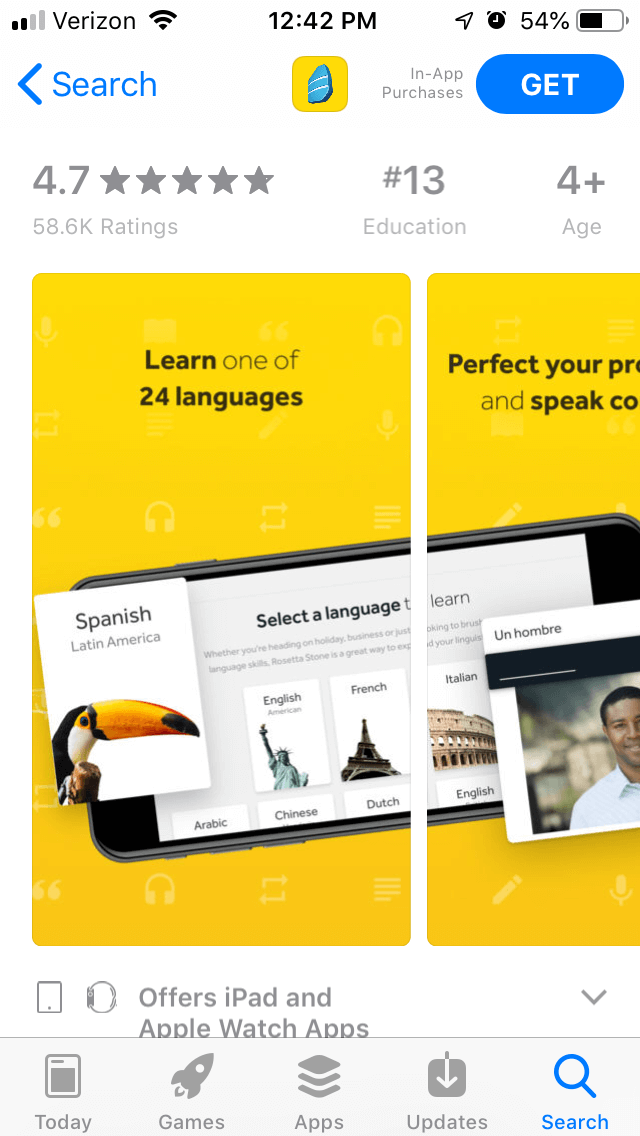
The screenshots all feature callout text in black lettering that utilizes a simple font. They’re direct and to the point, saying “learn one of 24 languages” and “learn on-the-go,” with key words bolded for improved visibility. The text could be enhanced to be larger and more visible, but the app is aiming to directly call out its features.
Each of the images within the screenshots shows different aspects of the app, such as videos teaching the language and the variety of courses. Overall, they only show a few aspects of the app, allowing for the developer to add more images that detail additional features.
Title & Subtitle: The app’s full name is “Rosetta Stone: Learn Languages.” The app name uses all 30 of the characters the App Store allows, with each one being a valuable keyword. Its subtitle, “Speak Spanish, French & More,” uses 28 characters and adds specific languages to its keyword bank to help it rank for “speak Spanish” (#4) and “speak French” (#4).
The app name and subtitle are great examples that follow ASO best practices. They use as many characters as possible while also expanding on the app’s features using important keywords. Formatting the app name and subtitle in this way provides the app with more space to use in its 100-character keyword bank while instantly letting users know what they’ll get with it.
Description: Rosetta Stone’s description starts off with a clear value proposition: “Learn a new language intuitively with Rosetta Stone.” It’s short and easy to read while making it abundantly clear what the app has to offer.
Following the intro, it has a lengthier paragraph that elaborates on what the app provides and how it works. This paragraph creates a block of text that users will typically glance over; if Rosetta Stone were to split it into a few shorter lines, it would be easier to read and digest at a glance.
Listing the top three features as it does is a good way of getting the important information available up front. Lists are easy to read quickly, so users browsing the App Store can see what it offers in an instant.
It then provides a “Your Rosetta Stone Journey” section, with larger paragraphs addressing how the app works step-by-step. While this is useful for providing information and integrating keywords for Search Ads relevance, it also makes each section into a large, unreadable block. If Rosetta Stone were to turn each section from a paragraph into bullet lists, it would be easier to read each one while glancing through the app.
Google Play
On the Google Play Store, Rosetta Stone app ranks at the top of search results for its name, as well as in the top five for a variety of valuable language-based keywords. It’s the second highest app for “languages” and the third-highest for “language learning,” “learn a new language” and “learn languages.”
It doesn’t rank as high for specific language keywords as on iOS, but it still ranks highly for “learn Spanish” (#9), “learn to speak French” (#5) and “learn Italian” #15. As with iOS, it appears high in the rankings for competitors like Duolingo (#7) and Memrise (#4), although it comes in at #144 for Grammarly.
Creatives: Rosetta Stone uses a different creative set on Google Play than on iOS, as it begins with a video. This 30 second ad uses animated text to provide information about what the app has to offer, although it does not include any in-app footage to demonstrate.
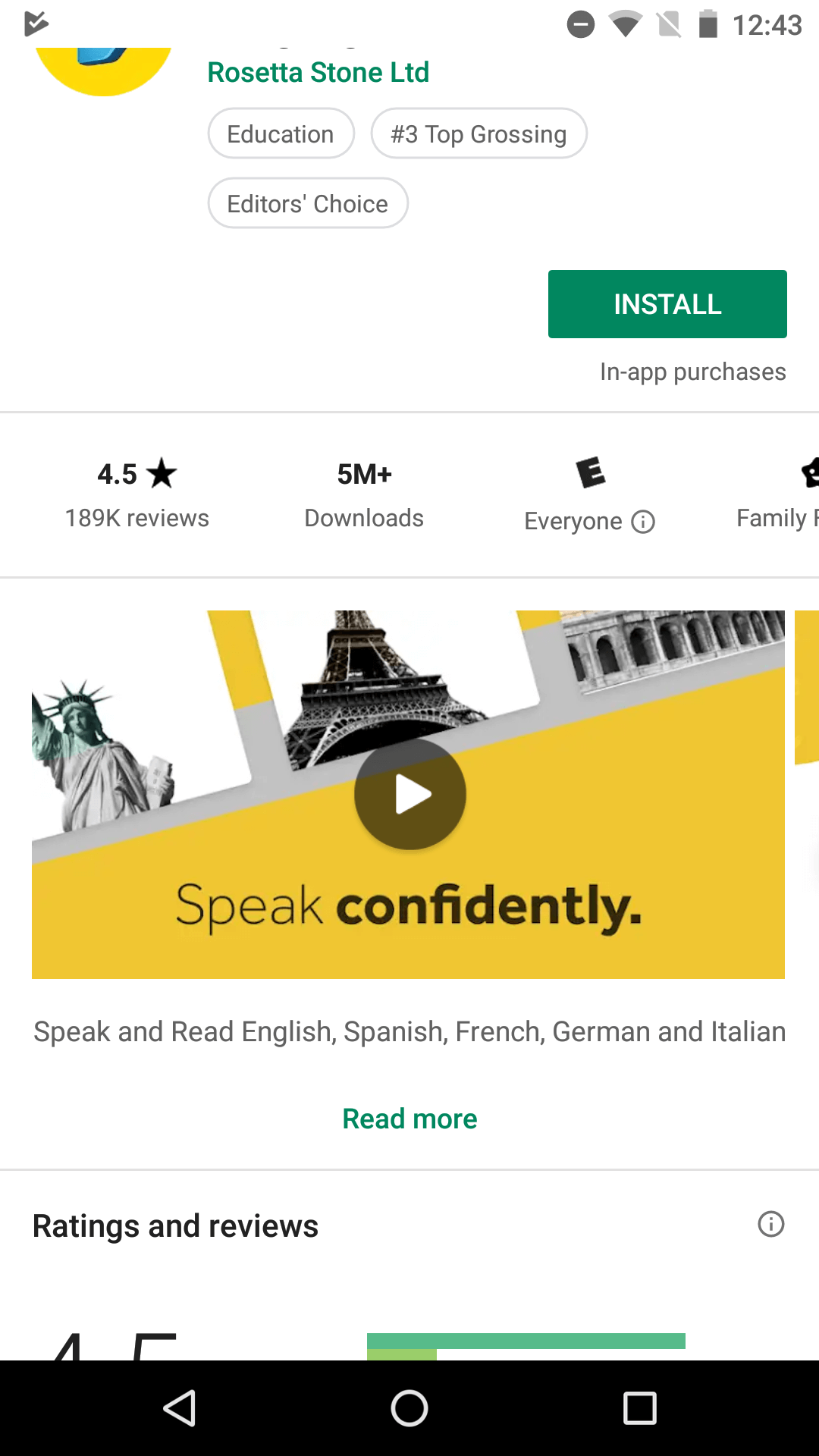
The five images that follow are presented in landscape mode, with in-app images on the bottom and callout text on the top. While these screenshots do provide relevant information with short but effective text, they’re not particularly visually engaging. While the iOS version used bright backgrounds and continuous images flowing from one screenshot to the next, the Google Play image set is just a screenshot and text with nothing to make them stand out.
Description & Metadata: While the description is formatted similarly on iOS and Google Play, there are some noticeable differences. The larger paragraphs work better on Google Play than they do on the Apple App Store, due to how they’re displayed on the devices. Turning the sub-sections from paragraphs into bullet lists would still help for both readability and keyword indexation.
Rosetta Stone makes good use of the ability to use bold text on Google Play to emphasize important words like “grammar” and “vocabulary,” making them stand out more. Even in the middle of large paragraphs, it’s still easy to find the key phrases that matter to users.
Google Play’s algorithm crawls the app’s description to find keywords, so it’s important that they’re placed near the front of each line. While Rosetta Stone follows this best practice frequently, it still features several headers and lines that can better utilize its keywords.
For instance, the first section under “Your Rosetta Stone Journey” is called “Open up your world.” This wording is not a relevant keyword or phrase, but the section lists the languages it teaches. The section’s title could reinforce the language-related keywords, then use bullet points to list each language instead of providing them all in a single sentence. The bullet list would help the app index for each language it lists and build its relevance for them.
Overall
Rosetta Stone is a popular and acclaimed app that has a solid App Store Optimization strategy. It makes great use of the title and subtitle space for keyword usage and informing users, its iconography is instantly recognizable, and its iOS screenshots flow nicely to engage users.
With that said, there are still some areas where it can improve. Its Google Play screenshots are unengaging, while its description could use fine-tuning on both stores. On iOS it just needs to be spaced out better for readability, while the Google Play description could put more of an emphasis on its keywords.
All in all, Rosetta Stone’s App Store Optimization is not perfect, but still effective in many ways. If you want to be fully fluent in ASO, you’ll want the optimization services that Gummicube can provide.
Want more information regarding App Store Optimization? Contact Gummicube and we’ll help get your strategy started.

With thoughtful data-driven optimization, Stride has the potential to improve both visibility and maintain a clear value proposition for its target audience.
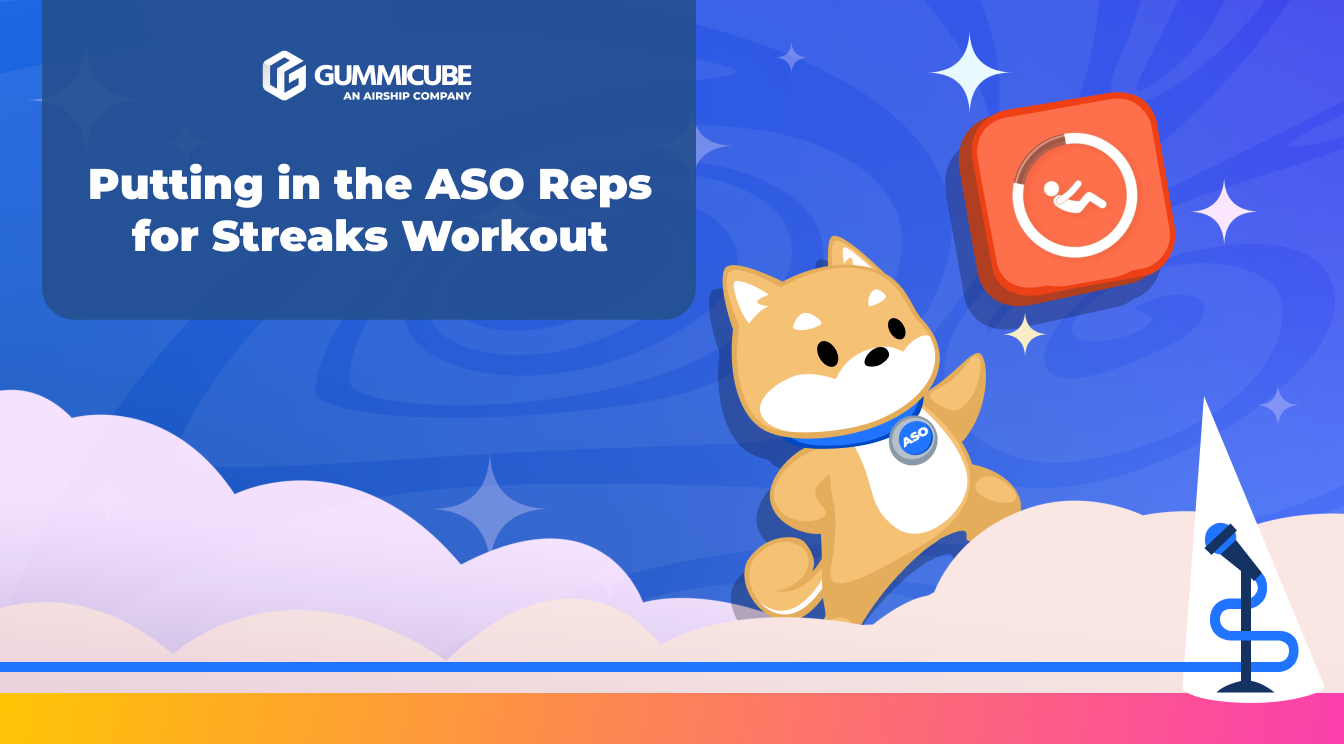
Streaks Workout has meaningful app functionality, but its app listing does not reach its full potential. Read more to see where it can improve its ASO strategy.
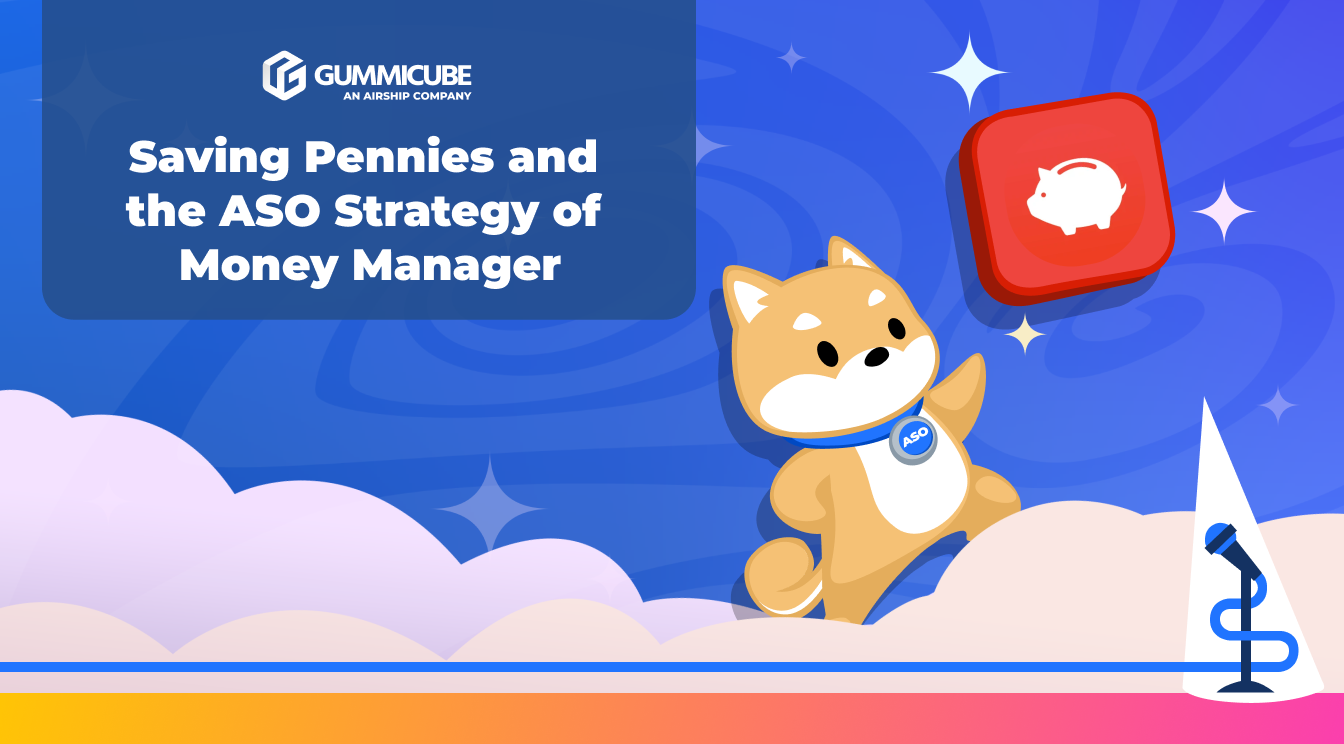
Small changes in Money Manager's ASO execution could result in a boost in visibility and conversion rates. Read more to see where they can improve.